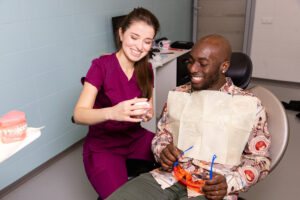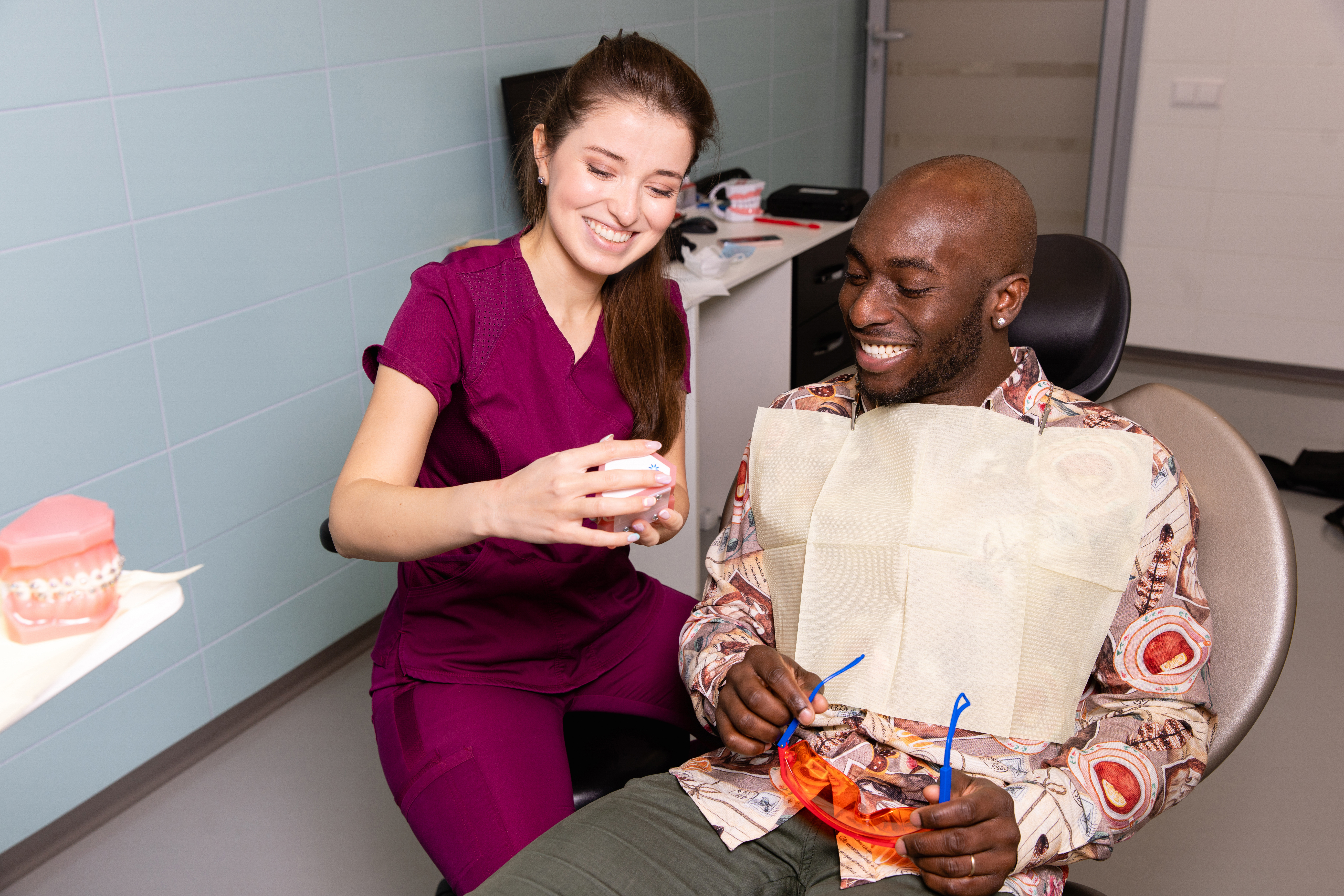Teeth, they work hard for you: soldiering along through every chomp of steak and chew of taffy. Just think: if you chew each bite of food ten times, and take a few dozen bites each meal, it adds up to hundreds of thousands of bites each year.
Fully appreciating the job your teeth do begins with understanding what each kind of tooth does and what makes each one different.
Incisors
These guys are front and centre, the “face” of the whole operation, if you will. They greet the world first every time you smile. But they have an equally important job: slicing food and pushing it back towards the rest of the team.
The eight incisors (four on top, four on the bottom) are thin and sharp to tear into food and shovel it inward. But they’re also used in the pronunciation of many sounds (think “th,” for instance) and they help position our lips.
Incisors are generally the first teeth to arrive at around six months for the baby set and six to eight years for the adult version. Fun fact: in rodents, the incisors are always growing, which lets them chew through nuts and other hard objects that would otherwise wear them down.
Canines
Next to your incisors, you have four canines. These sharp teeth often protrude slightly beyond the rest of your teeth, and are also used to tear and slice food.
We dentists often refer to them as the “cuspids,” from the Latin word for “point.”
Canine roots are longer than incisor roots, and they come onto the scene after those teeth, typically at around 12 to 20 months for the baby teeth and 11 or 12 years for the adult.
Pro tip: one of the easiest ways to determine if your neighbour is a vampire is to take a look at his or her canines.
Premolars
Also known as “bicuspids” (you guessed it: “two points”), the premolars are next on the chewing disassembly line. After your incisors, canines, lips and tongue push the food farther inwards, these eight dedicated workers begin the crushing and grinding that make food easier to swallow. Most people get their first at age 10, with another set growing in over the next year. Young children don’t have premolars. Instead, they have an extra set of…
Molars
These guys are at the end of the line, using their broad surfaces to grind up food before it’s swallowed. Kids get their first “deciduous” or “primary” molars at around 12 months of age, and these are eventually replaced by the premolars. The first pair of permanent molars arrives at around age six, and the second pair makes an appearance at between 11 and 13 years.
The Other Teeth
So those are the usual suspects that nearly everyone has. But there are some wild cards, some rogue teeth that don’t quite fit. For instance, wisdom teeth are molars in the far back of your mouth that don’t appear until your teenage years, or even early adulthood. These have a troublesome habit of not growing in properly, and can cause some considerable pain and discomfort, which is why they’re often removed.
Then we have what are known as supernumerary teeth. Usually, our final tooth tally is 32 no more, no less. But occasionally some people get an extra one here or there. These bonus teeth generally come in two forms: an extra incisor known as a mesioden, or an extra molar called a paramolar. Sometimes the mouth accommodates these extra teeth and they can be left alone, but they often need to be removed to ensure the rest grow in straight and strong.
Finally, there are also natal teeth, which occur in roughly one in 3,000 births. These little guys typically appear in the bottom gum during the baby’s time in the womb. They don’t have roots so they fall out pretty quickly. To avoid the risk of being inhaled, doctors recommend removing them soon after birth.
Now that you know a little more about your hard-working teeth, remember to treat them well. And that can start with a trip to your dentist.








